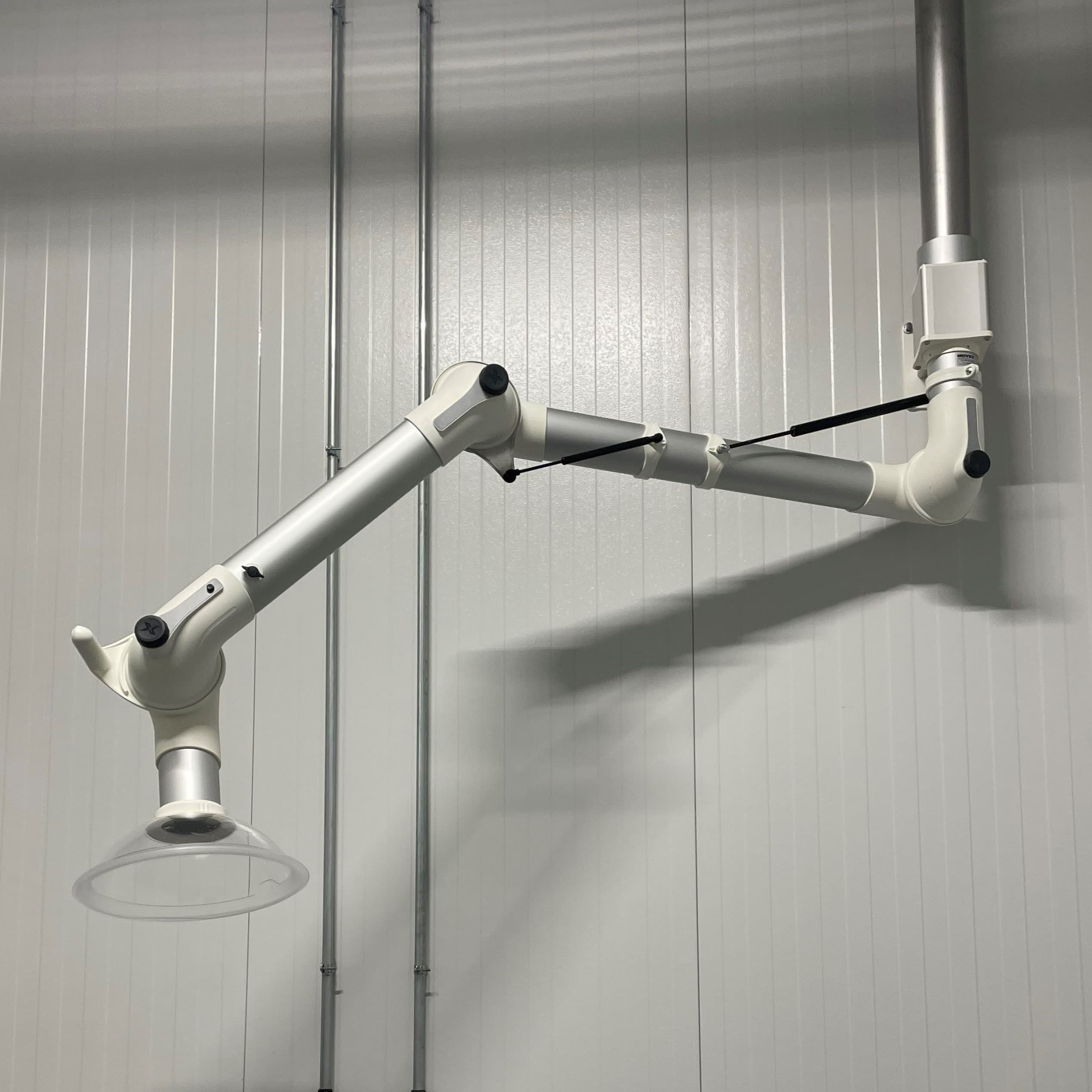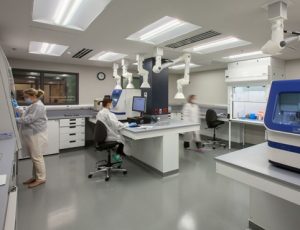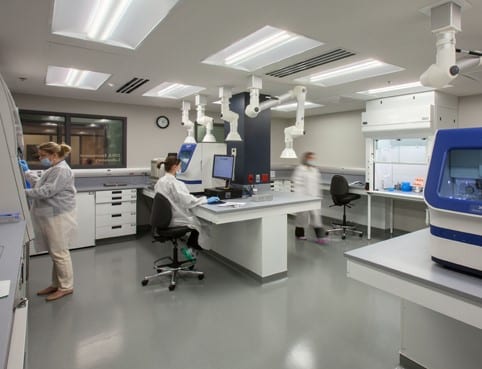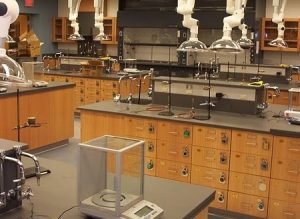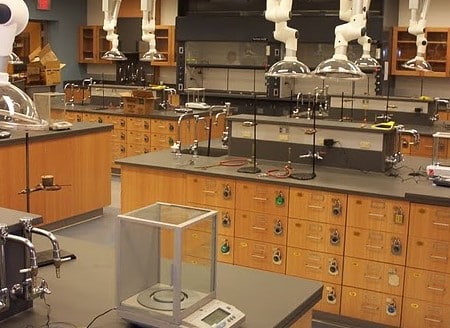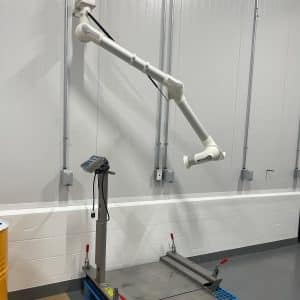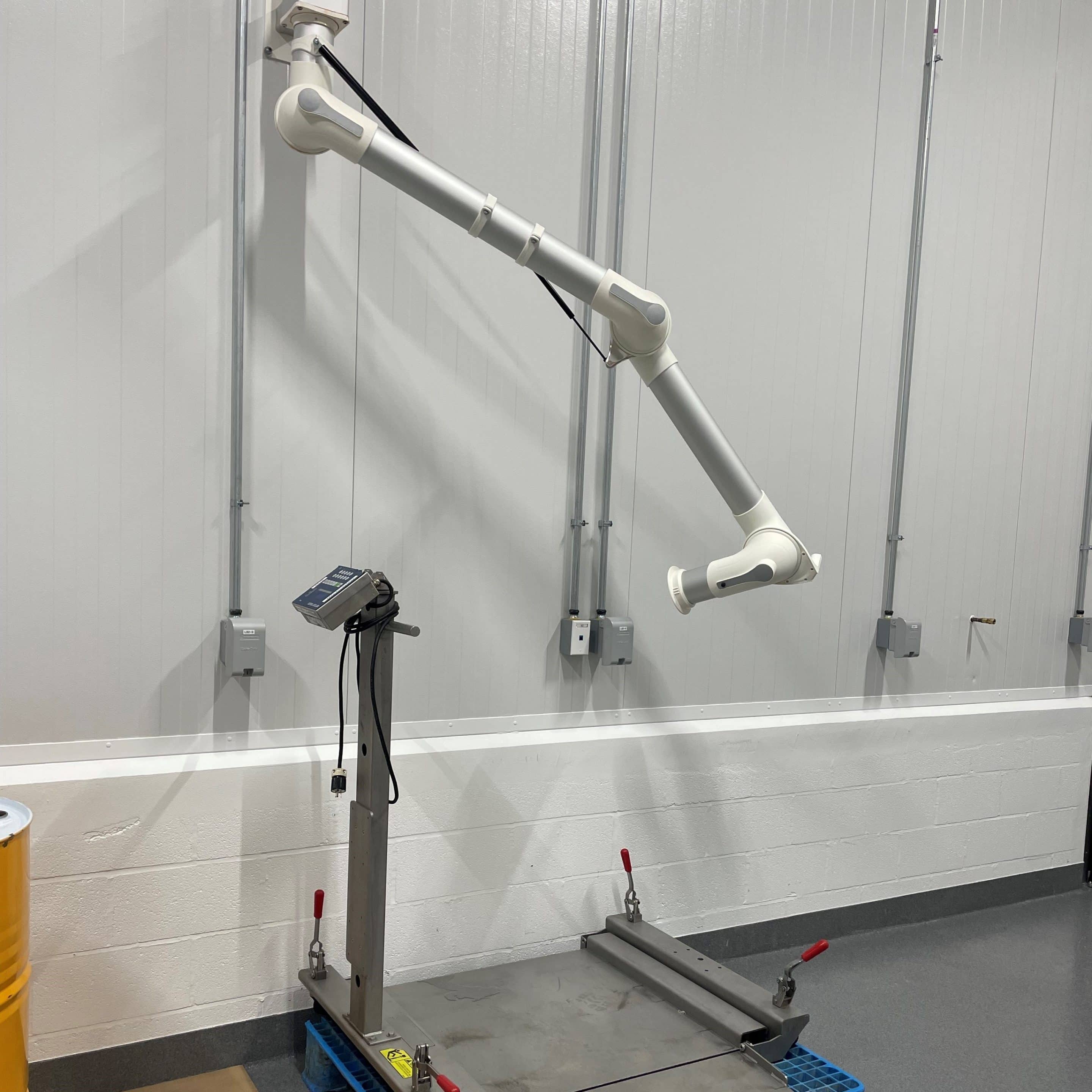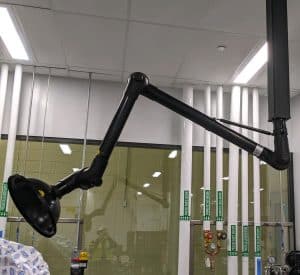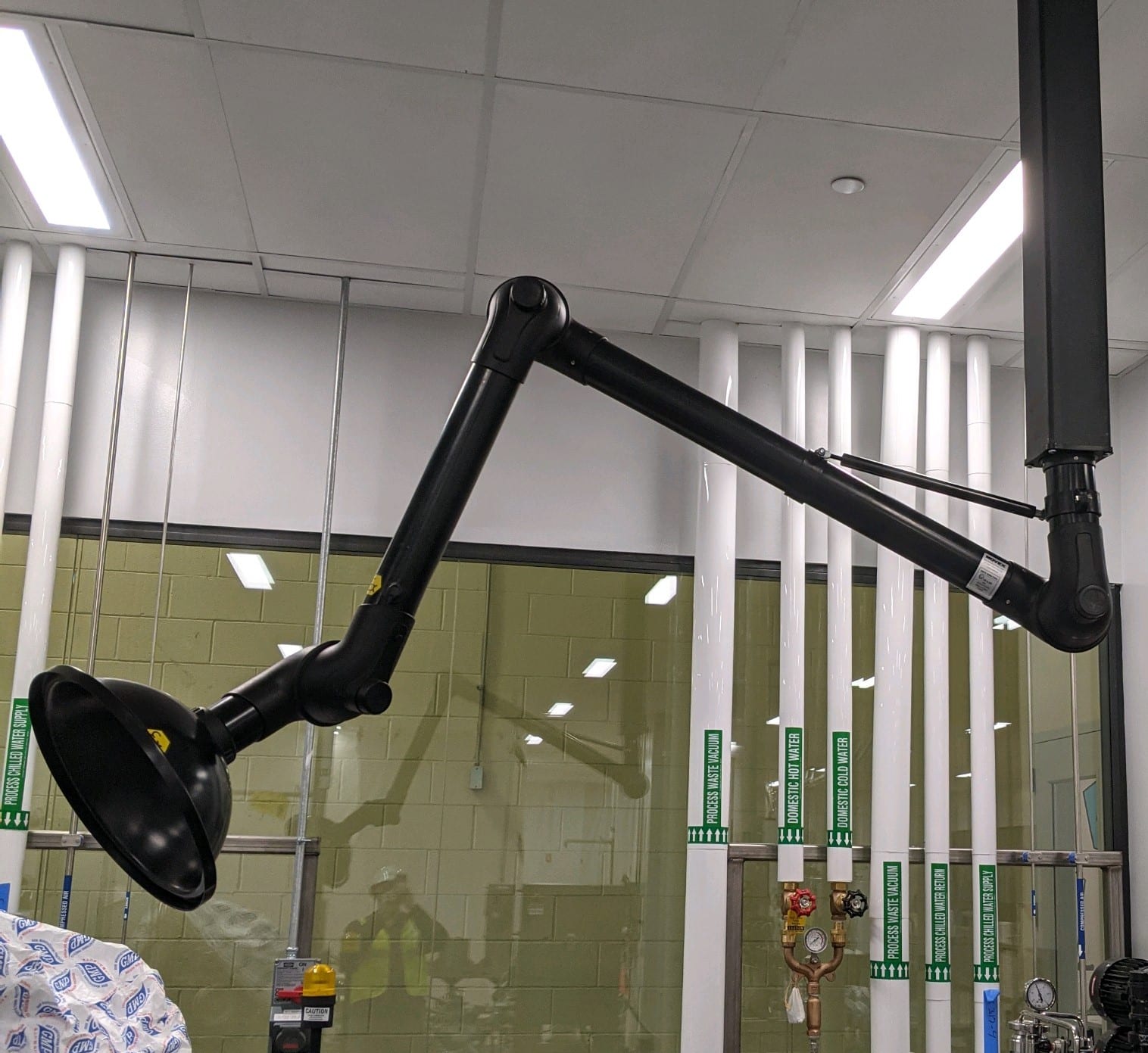In laboratory settings, many of the materials or substances handled are a health risk for workers. A source capture extractor arm allows a particulate, contaminated airstream, aerosol, or gas to be captured at the point of generation, not circulated and distributed through a building HVAC unit.
Capturing contaminants at their source, where a bench mounted hood is not practical, are an ideal method to protect students, scientists, and technicians.
Laboratory Fume Extraction Arms
Laboratory fume extraction arms have a proven history of successful applications for the collection of fumes, aerosols, odors, and vapors from the handling and transfer of toxic and aggressive liquid and dry chemicals in a laboratory environment. Investigative chemical and biological analytical procedures, teaching, clinical and research institutions, pharmaceutical, and biotech companies, and corporate research laboratories all employ the source capture technique. The reduced amount of exhaust air, the repositioning flexibility, and minimal space requirement make extraction arms an important accessory in these environments. In pharmaceutical settings, the high dollar value of certain compounds makes reclamation via source capture a cost-effective strategy.
Laboratory Extraction Arm Selection
Laboratory extraction arms features and options:
- Specially designed aerodynamic joint results in a low-pressure drop
- 2, 3 and 4’’ diameter tubes; multiple arm lengths available
- Ceiling mountings in eight standard lengths, wall brackets, and flexible bench mounting
- Standard construction is polypropylene joints and tubes of anodized aluminum
- Optional designs for corrosive, explosive, and anti-static environments.
- Accessories include a suction nozzle, metal hood, dome hood, shovel hood, or flat-screen hood
Laboratory exhaust applications vary, so call and we will share how others have enhanced air quality along with work safety using extraction arms.

